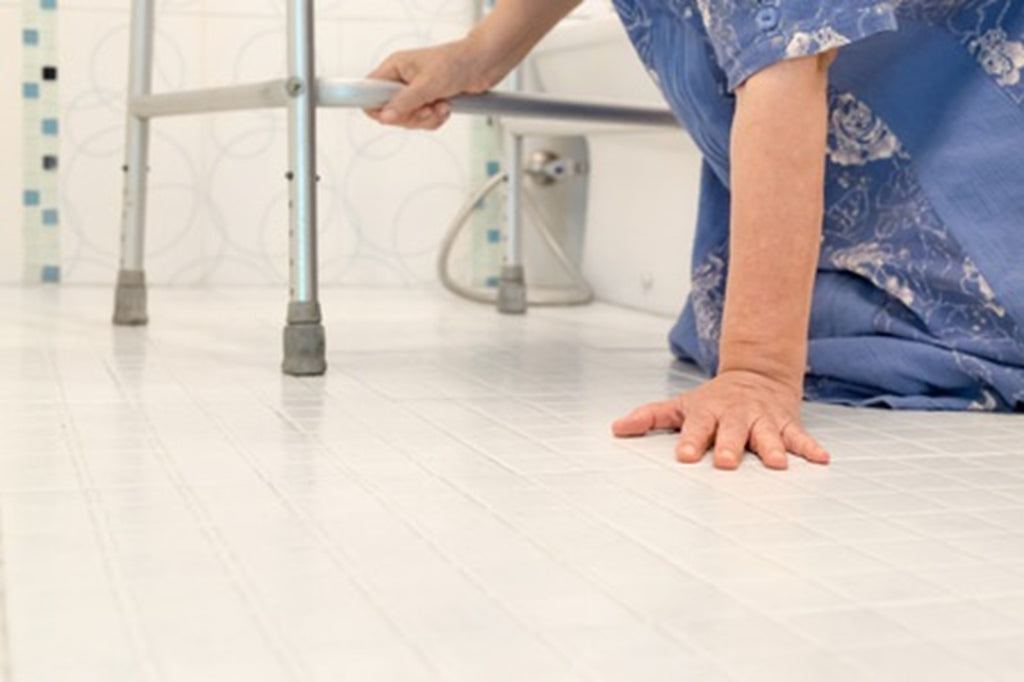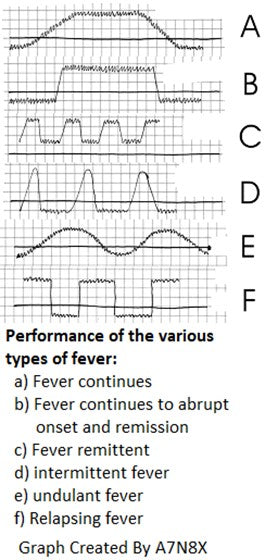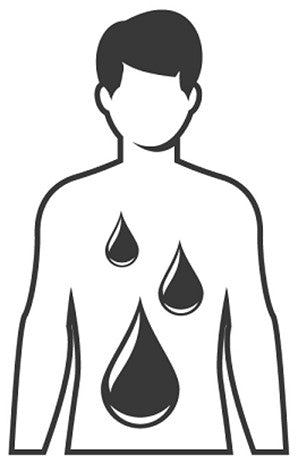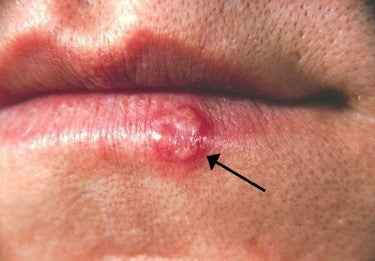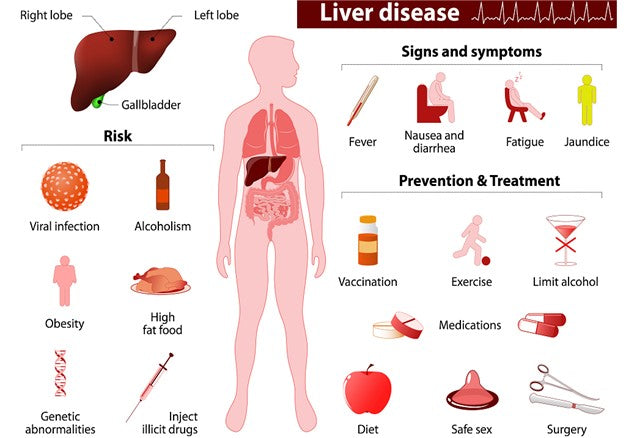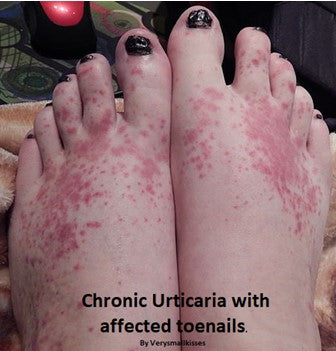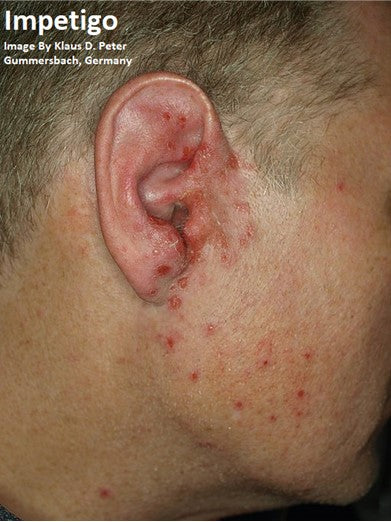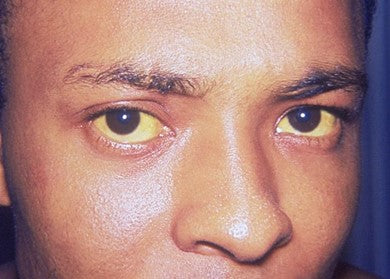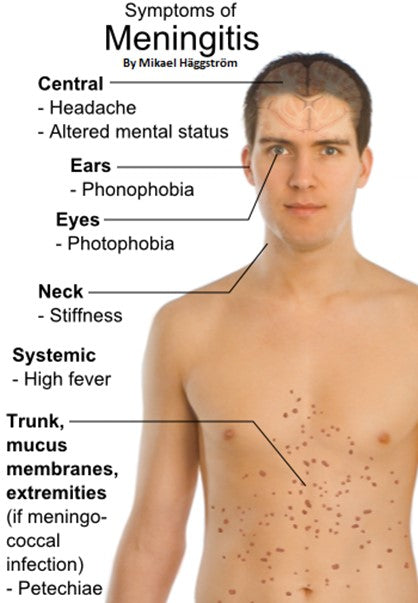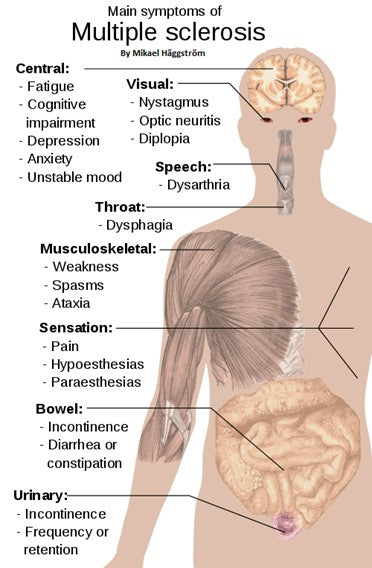Mayo Clinic reports that there are more than 3 million Herpes Simplex I United States cases per year. Herpes simplex is a common viral infection that is contagious. If you’ve ever had a cold sore or fever blister, you picked up the herpes simplex virus. Most cold sores are caused by herpes simplex virus type 1 (HSV-1).
Other names for cold sores caused by HSV-1 are:
- Cold sore
- Oral herpes
- Mouth herpes
- Herpes simplex labialis[i]
This virus can be spread by skin-to-skin contact with an adult who carries the virus. An adult does not have to have sores to spread the virus.
The herpes simplex virus is spread from person to person through close contact. You can get a herpes simplex virus from touching a herpes sore. Most people, however, get herpes simplex from an infected person who does not have sores. Doctors call this “asymptomatic viral shedding.”
Once a person becomes infected with a herpes virus, the virus never leaves the body. After the first outbreak, the virus moves from the skin cells to nerve cells. The virus stays in the nerve cells forever, but it usually just stays there. In this stage, the virus is said to be dormant, or asleep. However, it can become active again.[ii]
Some people have no symptoms from the infection, while others develop painful and unsightly cold sores. Cold sores usually occur outside the mouth, on or around the lips. When they are inside the mouth, they are usually on the gums or the roof of the mouth. They are not the same as canker sores, which are not contagious.[iii]
Do not touch on or around a cold sore.
Herpes Whitlow (aka Herpetic Whitlow)[iv]
Herpes whitlow is a viral infection of the hand and is contagious with person to person contact[v]. As such, it is a massage contraindication. Herpes whitlow results from exposure to type 1 or type 2 herpes simplex virus (also contagious) into broken skin. The infection may occur as a complication of primary oral or genital herpes lesions.

Health care workers specifically exposed to oral secretions are the most susceptible (e.g., dental hygienists, respiratory therapists). They can be affected if they are not using universal precautions.
Signs and symptoms of herpetic whitlow include the abrupt onset of edema, erythema, and significant localized tenderness of the infected finger. Often, the pain is out of proportion to the physical findings. Fever, lymphadenitis, and epitrochlear and axillary lymphadenopathy may be present. Small, clear vesicles are present initially. These may eventually coalesce and mimic a bacterial infection.

Herpes whitlow usually is self-contained and resolves in two to three weeks. Pharmaceutical treatment within the first 48 hours of symptom onset may lessen the severity of infection. This infection recurs in 30 to 50 percent of cases, but the initial infection is typically the most severe.
Herpes Zoster aka Shingles
Almost 1 out of every 3 people in the United States will develop shingles, also known as herpes zoster, in their lifetime. There are an estimated 1 million cases of shingles each year in this country. Anyone who has recovered from chickenpox may develop shingles; even children can get shingles.

Shingles is caused by the varicella zoster virus (VZV), the same virus that causes chickenpox. After a person recovers from chickenpox, the virus stays dormant (inactive) in the body. Scientists aren’t sure why the virus can reactivate years later, causing shingles. The risk of shingles increases as you get older.[vi]
Shingles cannot be passed from one person to another. However, the virus that causes shingles, the varicella zoster virus, can spread from a person with active shingles to cause chickenpox in someone who had never had chickenpox or received chickenpox vaccine.
The virus is spread through direct contact with fluid from the rash blisters caused by shingles. Shingles is less contagious than chickenpox and the risk of a person with shingles spreading the virus is low if the rash is covered.
A person with active shingles can spread the virus when the rash is in the blister phase. A person is not infectious before the blisters appear. Once the rash has developed crusts, the person is no longer infectious.
People who have shingles are advised to:
- Cover the rash and avoid touching or scratching it.
- Wash hands often to prevent the spread of varicella zoster virus.
- Avoid contact with “vulnerable” people until the rash has developed crusts.[vii]
For bodyworkers, someone who has never had chickenpox should avoid contact with shingles (close contact could lead to virus transmission). It is ill-advised to work on or over the blister-like sores (shingles) – even when virus transmission is not a concern. While all blister patterns are different, herpes zoster regularly breaks out on one side of the body and may form a pattern that looks like a line. Allow blisters to heal and skin become fully intact prior to working over the affected area and as always, it’s best to seek approval and/or direction for services from a medical physician regarding medical conditions.


To learn more, please register for training at https://ceinstitute.com/
#massage #massagetherapy #massageprecautions #massagecontraindications
[i] American Academy of Dermatology. “Herpes Simplex.” Herpes Simplex | American Academy of Dermatology, Retrieved online: 1 May 2018, www.aad.org/public/diseases/contagious-skin-diseases/herpes-simplex#overview.
[ii] American Academy of Dermatology. “Herpes Simplex.” Herpes Simplex | American Academy of Dermatology, 1 May 2018, www.aad.org/public/diseases/contagious-skin-diseases/herpes-simplex#causes.
[iii] National Institutes of Health. “Cold Sores.” MedlinePlus, U.S. National Library of Medicine, 23 Apr. 2018, medlineplus.gov/coldsores.html.
[iv] Clark, Dwayne C. “Common Acute Hand Infections.” American Family Physician, 1 Dec. 2003, www.aafp.org/afp/2003/1201/p2167.html.
[v] Higuera, Valencia, “What you Need to Know About Herpetic Whitlow” Healthline, 21 June 2017, https://www.healthline.com/health/herpetic-whitlow
[vi] National Center for Immunization and Respiratory Diseases. “Shingles (Herpes Zoster).” Centers for Disease Control and Prevention, 19 Jan. 2018, www.cdc.gov/shingles/about/overview.html.
[vii] National Center for Immunization and Respiratory Diseases. “Shingles (Herpes Zoster).” Centers for Disease Control and Prevention, 19 Jan. 2018, www.cdc.gov/shingles/about/transmission.html.

